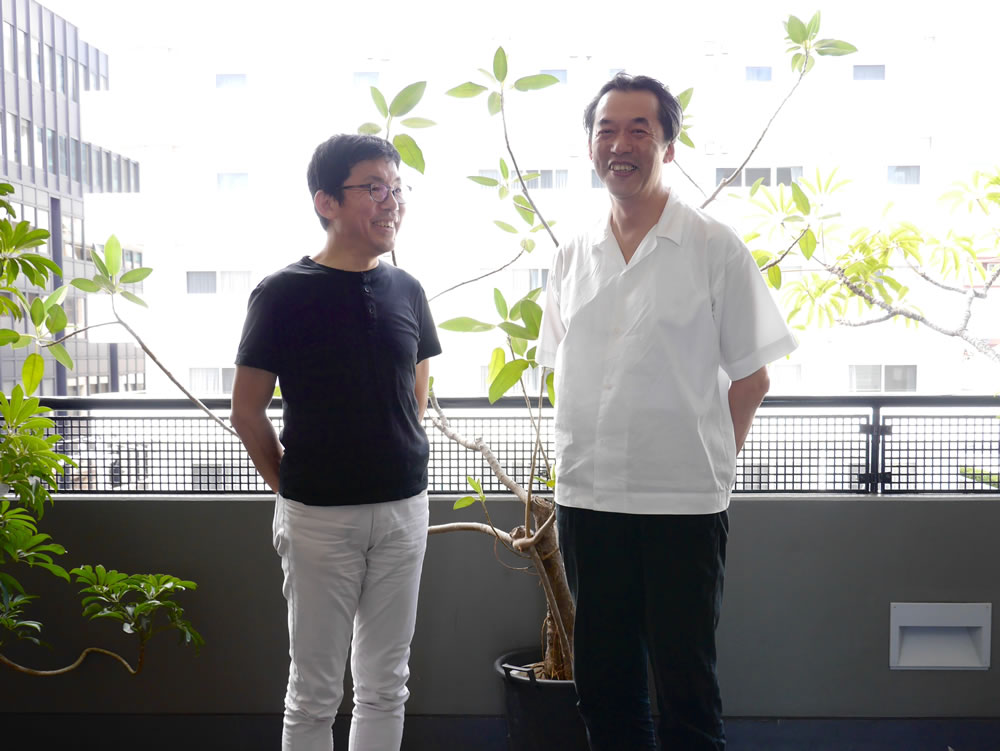This is Part 2 of the file1 featuring the Department of Information Design of Tama Art University (hereafter referred to as TAU). The department was inaugurated in 1998 and has been changing its system and curriculum in the changing society. Its flexibility and diversity may be the epitome of the field of information design that has been getting ahead of the times. Part 2 will delve more into the characteristics of the department, which has been producing many artists and creators who are currently active in a wide range of fields.
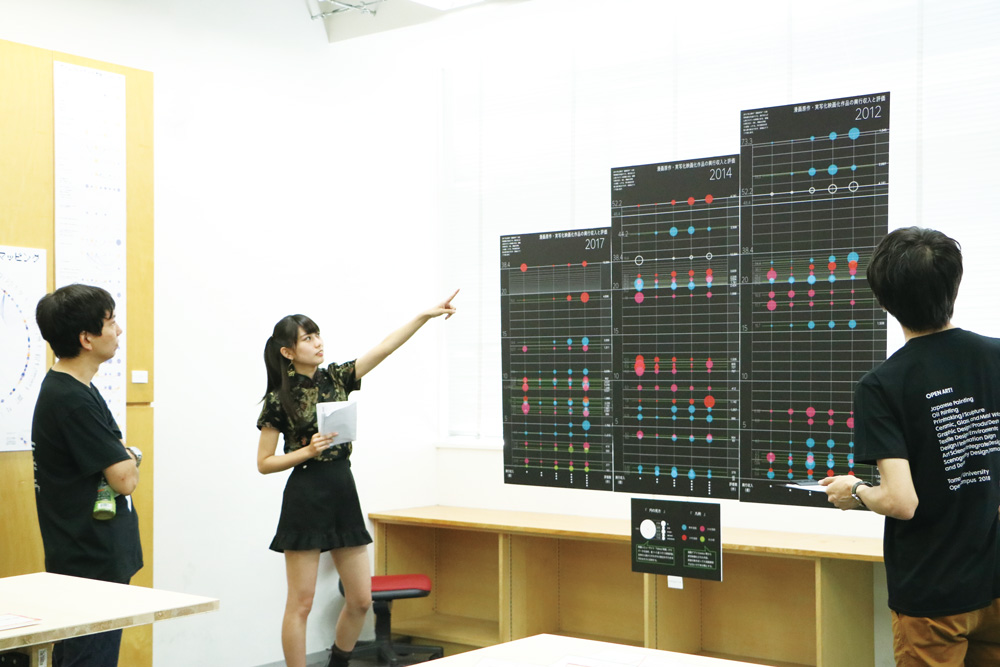 A lesson at the Interaction Design Course of the Department of Information Design
A lesson at the Interaction Design Course of the Department of Information Design
As exciting as swimming in open sea
Why was the department named “Information Design” in the first place?
Akihiro Kubota (hereafter Kubota): There are two reasons. First, when the department started in 1998, it was in the midst of the age of “information,” which was a keyword of society. Fusion of engineering and design was also a national mission around that time. The engineering field in this context means computer science and communication technology. To explain fusion of the art field and the engineering field in an understandable way, we found that using the expression “information design” was very effective. That’ the second reason.
Did the department have two courses from the beginning?
Kubota: There was no course at first. It was a big department with 120 students in each year of study. As the number of students was increasing with new students joining in the following years, we became aware of the difficulties in managing the department with so many students. As a result, we set up an art course and a design course in the department and organized them to be able to display their respective characteristics. The Art and Media Course, one of the courses, has three seminars that we call “laboratories.” Each seminar is operated by multiple teachers, not by only one teacher.
A video produced by current students of the Art and Media Course to introduce the university.
Mitsuhiro Miyazaki (hereafter Miyazaki): The Interaction Design Course, the other course, calls seminars “fields,” not laboratories. Students on their third year select one of the seminars and are divided accordingly.
Kubota: In our department, 120 students in each year are divided into two courses and also subdivided into three laboratories or fields, forming multiple clusters of 20 or so students. This is an appropriate size both for students and teachers.
Is there anything you are particularly careful about when designing the curriculum?
Kubota: I make it a point to design the curriculum that makes students experience something they usually don’t do on their own initiative. Students of art universities are already self-motivated to work on what they like, such as photographing, filming and drawing, even if they aren’t told to do so. On the other hand, they have almost no opportunities to experience things like programming and digital fabrication (writer’s note: a technique to physically materialize digital data of an idea, a person’s body data or other information by driving a digital machine tool to process and form lumber, acrylic material or other workpieces based on the data). I’m also aware that some students wake up to something when experiencing new or unusual things in opportunities given by teachers, such as thinking and exchanging ideas in a group of people from a different background and making a presentation before many people. I keep this in mind and think hard to include occasions that can cause metamorphosis effects in the curriculum.
As a result, students will learn a wide range of matters for the limited period of four years.
Kubota: In their first year, all the students take lessons of the basic subjects, that is, visual image, sound, programming and craft. Second-year students learn with an a-la-carte style curriculum that allows them to select a total of four workshops in a year. Through this selecting process, students face the challenge of finding what they want to do. In the Department of Information Design, its entrance and exit are distant. That is to say, in a painting department at an art university, for example, students usually take entrance exams testing their dessin or painting skills and create paintings for their graduation works. Students at a graphic design department are tested for their plane composition skills at entrance exams and create plane composition works for graduation. The situation is different at the Department of Information Design. It’s true that entrance exams include pencil dessin, but many students create three-dimensional works and installations for graduation works, while some other students make machines, electric circuits or even software when graduating. These students leave through an exit that is different from their entrance. Some students may get disoriented for a while, while other students are grateful for becoming to able to do things they didn’t know before entering TAU.
Miyazaki: In the Interaction Design Course, firstyear students learn modeling techniques and computer languages as compulsory subjects to acquire basic skills and knowledge of information design. In their second year, they select seminars of basic subjects, such as programming, infographics, visual image and electronic work to design curriculums to meet their own interests and their planned career paths. In their third year, they pursue their interests and deepen their understanding of their respective specialty fields.
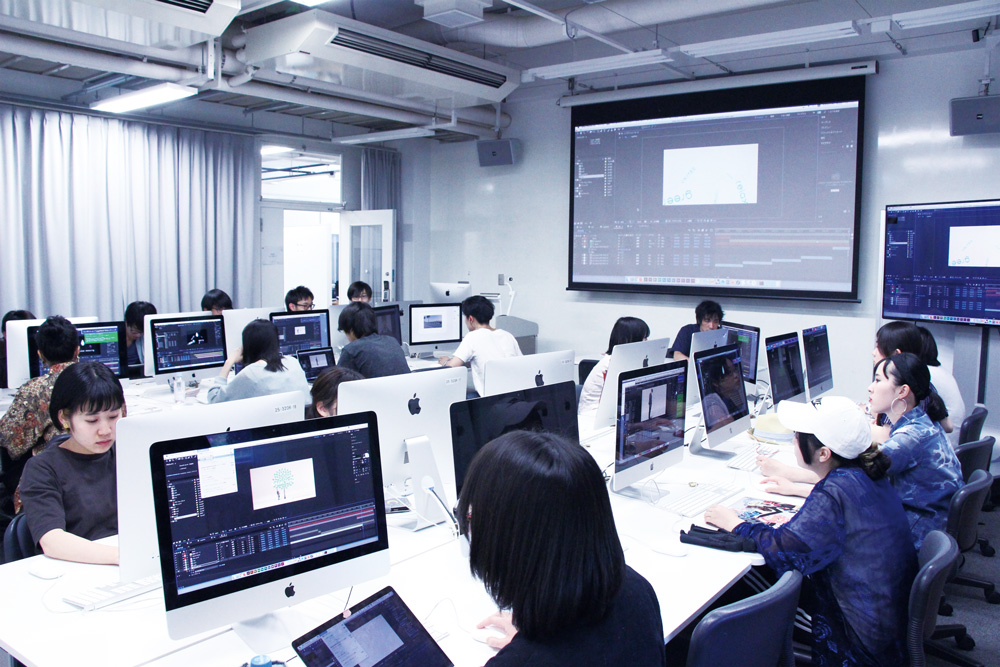 A lesson at the Department of Information Design
A lesson at the Department of Information Design
Kubota: This environment allows students to experience various things. At the same time, learning in such an environment may be very hard for them. It’s like they are thrown into the open sea and asked, “So what do you want to do?” There’s no established route or no standard time to finish swimming the route. On the other hand, they aren’t athletes, so they are allowed to swim in whatever ways and in whichever directions. What’s more, this isn’t a matter of the faster the better. Through this process, they are forced to ask themselves why they are there and how the ocean where they are swimming is like. I believe this is how the university education should be like. These days, coordination of high school and university (writer’s note: High schools and universities work together to coordinate and provide educational activities) has been advocated and its significance has been stressed. In actual fact, university education is completely different from the education on high school level or earlier. There is great discontinuity between the two. Due to this discontinuity, going to university is a worthwhile experience. I do hope university students realize that this discontinuity can change their world and how it is thrilling and delightful to experience this.
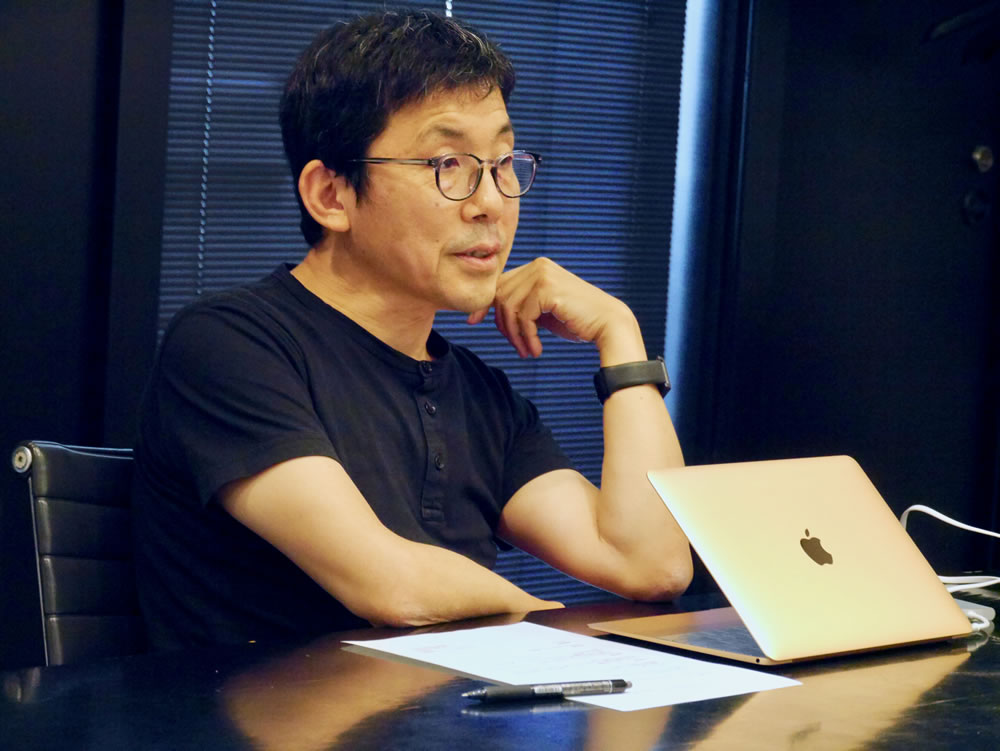 Akihiro Kubota
Akihiro Kubota
Human resources to create diverse work styles
You said students enter through the same entrance and leave through diverse exits. Please talk about their career paths after graduation.
Kubota: Today, fewer students feel it realistic that they get a job at a large company on graduation and continue working there until their mandatory retirement. Under these circumstances, how should they consider balancing their career plans and lives? Now is the transition period of people’s views on this matter. We teachers are prepared to think with students about their futures, whereas some students eventually start to be active in the fields beyond our imagination. Manga artists traditionally create serials for weekly magazines and have them printed in a comic book form by publishing companies. Today, this orthodox work style isn’t everything. Thanks to the Internet, they have new options in creation and publication styles. One of this new type of creators is Ryo Hirano, a graduate of the Art and Media Course who is active as an animation creator. This artist publishes works through various media and works for bookbinding, too. Another example is backspacetokyo, a small production group that includes some graduates of our laboratories. Its members are freelance artists. They share the same office and work in a team for each project. I feel this way of dynamic team activities will more and more spread from now on.
Miyazaki: In a way, companies that hire our graduates are behind them at first and will catch up with them a little later. For example, the concept of “design thinking” had already been taught at the Interaction Design Course when this expression didn’t exist yet. Many people those days may have thought, “What’s the use of that?” Today, in contrast, it’s said that businesses can’t keep pace with the times unless incorporating the idea of design thinking. We’ve been constantly providing such pioneering education, and I feel this is why our graduates have been getting jobs at an increasing number of businesses and organizations. Graduates of the Interaction Design Course are active in a wide range of fields. Some work for the Internet business in the information industry, while some others work on designing video games in the entertainment industry. The graphic design field, manufacturers, advertisement agencies, the media industry including broadcasters and publishers as well as public facilities such as art galleries and museums, and many more.
Kubota: Many graduates of the Interaction Design Course are high profile and active in various intriguing ways, too.
Miyazaki: Among them is Yumi Minakawa, a charismatic head editor. She uses her creative ideas to boost the sales of magazines with furoku (free gifts). Tetsuya Ota won grand prix at the Cannes Lions International Festival of Creativity (in 2017) for his sperm checker project themed on infertility. Fuyuki Shimazu became an independent artist after working for a major advertising agency. His activity of making cardboard wallets was featured in a film. Kyotaro Hayashi, a film artist and film director, directed more than 50 promotion videos of famous musicians last year alone and rapidly gaining public attention. They are just a few I can immediately think of. Indeed, a lot of graduates are active in doing high-profile works. Of course, many other graduates also are doing excellent jobs of designing for user interfaces (UI) and user experiences (UX) at companies, although their names are unknown publicly.
Kubota: Students sometimes ask my advice about their job-hunting activities. At that time, I always say to them, “Doing job-hunting activities is nothing wrong, but the most important thing is to create good graduation works.” If they create and show good works, they definitely attract someone’s attention. Works by graduating students are on display at special exhibitions. If visitors acknowledge these works, they come and meet the students. In this respect, I still believe in hidden reserves of strength in society. I always feel visiting companies following the ordinary job-hunting path isn’t the only way to get a job. In fact, many students who made good graduation works proved to continue doing well after graduation. This is so encouraging for us university teachers and makes us believe once again that a place of day-to-day education contributes to building a creative society. I said students’ entrance isn’t their exits when graduating. Some students feel their four years at university is too short. For their first and second years, they discover something new and interesting through trying various things. For the following two years, they work on something substantial to realize how they are like. They don’t have to finish there and can go on to two years’ master’s programs at the graduate school. This is a place for creative experiment to find their own potential for doing something different. In fact, I’ve found students at the graduate school dramatically changed due to their learning for two more years there.
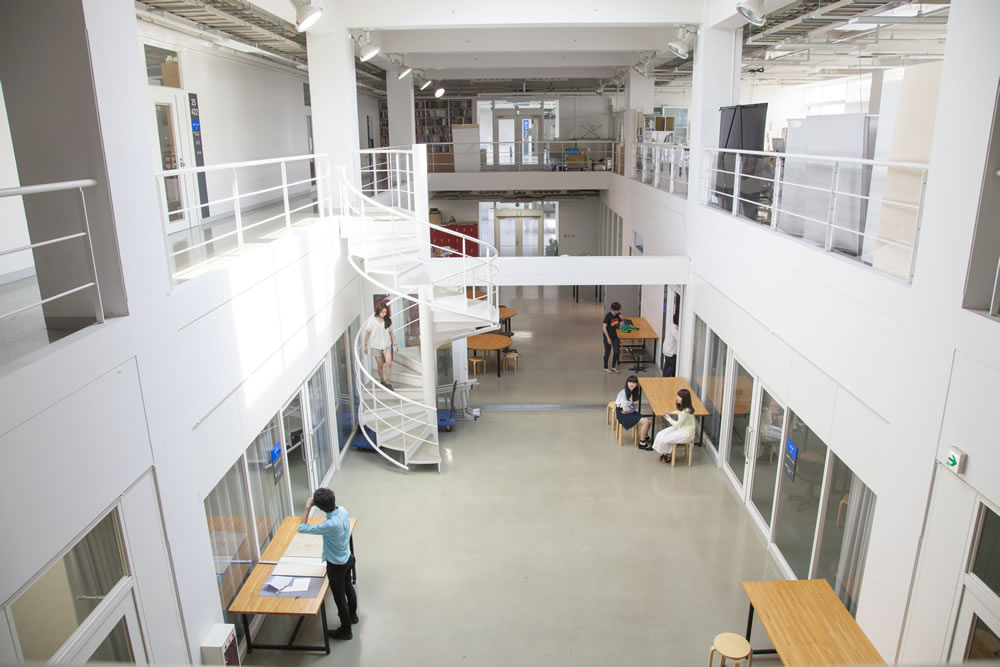 Department of Information Design campus
Department of Information Design campus
Miyazaki: The two courses of the Department of Information Design are united at the graduate school. Graduate students can learn under teachers specializing in various fields. I think this is a very appealing environment.
Kubota: Being mixed and reorganized this way is an interesting feature of the graduate school. Even if students don’t go to graduate school, I hope they’ll continue seeking and exploring new things in their lifetime as someone involved in this field, and stay in a place where they can keep learning meaningful things in various ways without becoming inflexible or matured. Of course, we the teaching staff must be the first to do this.
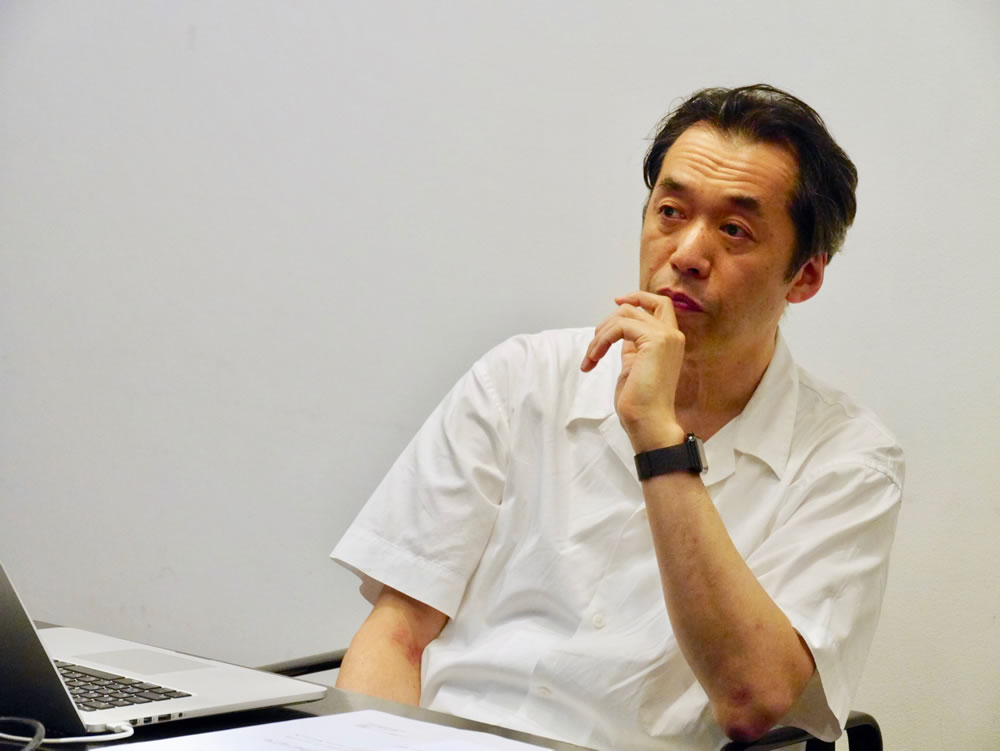 Mitsuhiro Miyazaki
Mitsuhiro Miyazaki
The future path is not to decide in advance but look back on later
Before concluding your face-to-face talk, please give some words to high school students who are going to take entrance exams and students currently learning at the university.
Kubota: These days, it is likely priority is given on lessons that seem to directly contribute to getting jobs. But I hope students forget such phrases as “career path” or “career design.” Career is nothing to design but something to look back on later. It works very little if you think of this and that in advance. Even when you feel you are swimming properly along what looks like an established route in the midst of the open sea, you’ll often end up finding nothing waiting for you beyond there. Instead, you should be aware you need to constantly adjust your route when swimming while thinking things like “I may be able to find something interesting if I go in this direction.” This way of thinking isn’t limited just to the field of art and design.
Miyazaki: In this respect, “learning” at the Department of Information Design isn’t like climbing a mountain heading eagerly for its peak as the goal, but like hiking a forest by pushing your ways through trees to discover something.
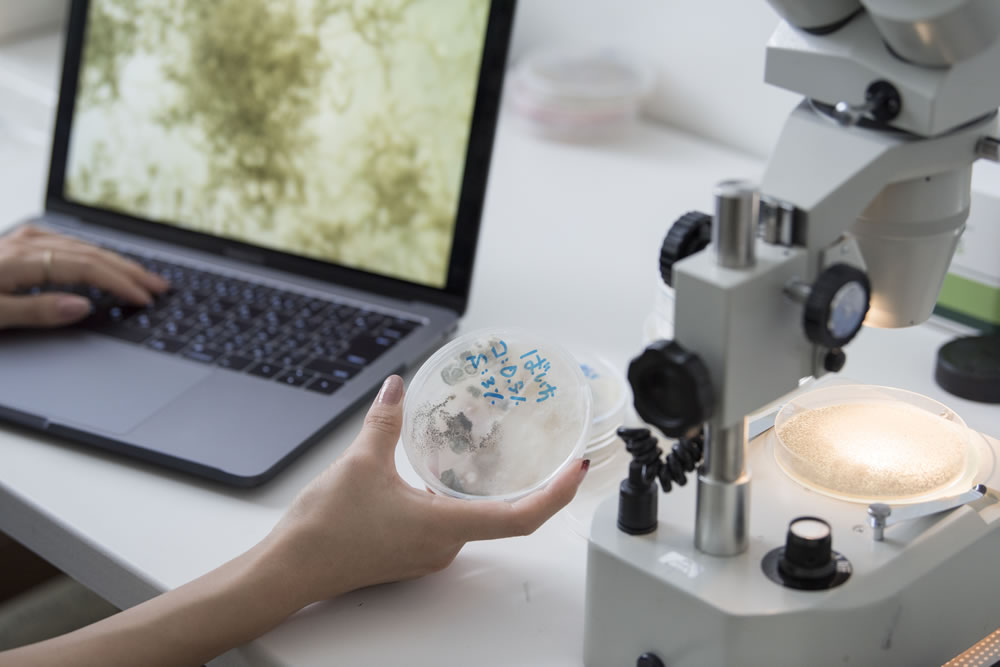 Department of Information Design
Department of Information Design
Kubota: In a good sense, this department didn’t have great masters or authorities like mountain peaks. When the department was set up around the end of the 1990s, I was still in my 30s, and there was almost nobody in an older generation. Today, after a little over 20 years, we are in a position to always be prepared to update ourselves not to restrain younger generations. I also want students to live in a world different from ours. Curriculum is a kind of structure and nothing but a frame. If any university tries to cram students into curriculum, it will be curtains for that university. Instead, universities should think hard to change the frame or the structure depending on how students in each era are like. Both technology and society have greatly changed in the past 20 years. It’s obvious. For example, users of the same type of smartphone use and feel about it differently according to their generations.
Miyazaki: Some students are good at using the flick input method of smartphone rather than using a keyboard of personal computer. That will probably change in the course of time. Technologies are constantly changing in our daily lives. I hope students naturally learn new technologies and freely use them in their creative activities, just like breathing.
Kubota: I agree. I think it’s important to determine what is unchanged and what is changing in society. University education is similar in this respect. In fact, part-time teachers are playing important roles in teaching fields that are changing. TAU and many other private universities have a lot of part-time teachers and their backgrounds are diverse. I’ve suggested earlier in this talk that students examine the work of teachers if they feel it difficult to decide universities to go. See lists of part-time teachers in addition to full-time teachers to know about their work, and you better find the characteristics of each university or department.
Akihiro Kubota
Born in 1960, Kubota is an artist and professor of the Art and Media Course of the Department of Information Design at Tama Art University. He also serves as director of the Art Archive Center of the university. He completed the Division of Engineering, Department of Naval Architecture of The University of Tokyo’s graduate school and got a PhD in engineering. He studied computational fluid dynamics and artifacts engineering before starting to teach at Tama Art University in 1998. He was honored with the Award of Distinction of the Hybrid Art of Prix Ars Electronica 2015 as a member of the team working on ARTSAT1: INVADER, a first artificial satellite for artistic experiments in space. Due to his contribution to the Artsat project, he was also given the 66th Minister of Education Award for Fine Arts (Media Arts Division). His publications include Harukanaru tasha no tame no design: Kubota Akihiro no shisaku to jissou (Design for Otherness: Akihiro Kubota’s thinking and implementation) published by BNN, Inc. in 2017 and Media Art Genron (Media art principles) co-authored and published by Film Art Inc. in 2018.
Mitsuhiro Miyazaki
Born in 1957, Miyazaki is an art director and professor of the Interaction Design Course of the Department of Information Design at Tama Art University. Miyazaki also serves as a managing director of Axis Inc. He graduated from the Faculty of Fine Arts of Tokyo Zokei University. After serving as an art director of a fashion magazine, he joined Axis Inc. in 1986. He has engaged in art direction of the company’s CI and the design magazine Axis and planning exhibitions. He currently supervises the company’s creative department, working on branding and design projects for finding and solving problems for many companies. He also serves as a board member of Think the Earth, a nonprofit organization aiming to realize a sustainable society through the power of design.
Photographed in cooperation with Axis Inc.
Photo courtesy: Tama Art University
(information)
Art and Media Course and Interaction Design Course
Department of Information Design
Tama Art University
Hachioji Campus (Graduate School, Faculty of Art and Design)
2-1723 Yarimizu, Hachioji, Tokyo 192-0394
+81-426-76-8611 (switchboard)
https://www.tamabi.ac.jp/english/dept/id.htm
*URL links were confirmed on May 8, 2020.
| ◀Part 1 |












